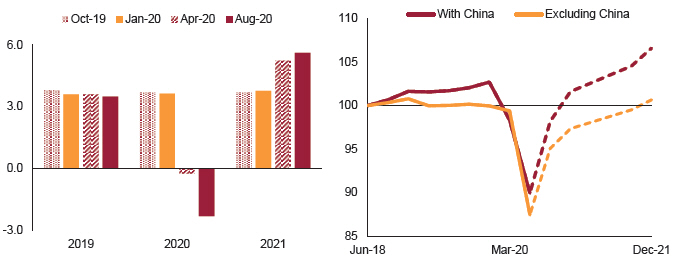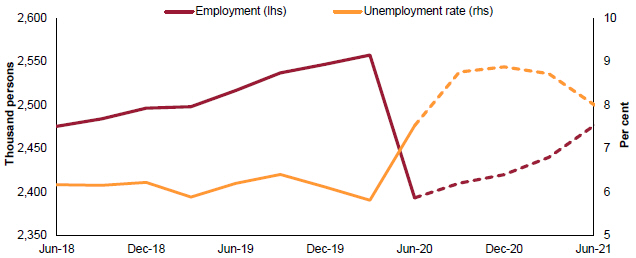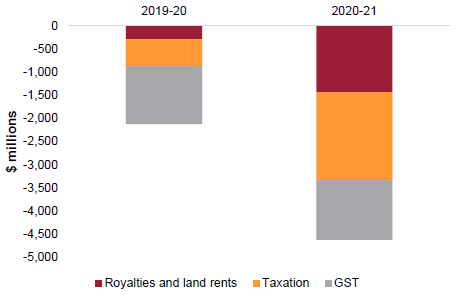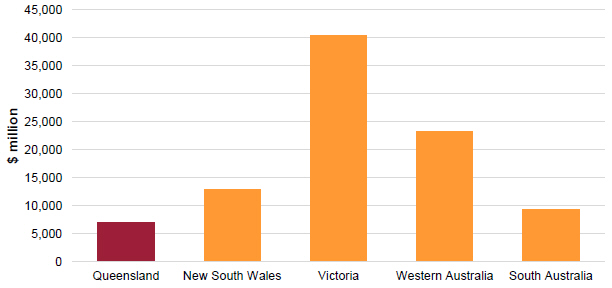Economic strategy
The COVID-19 pandemic is first and foremost a health crisis. Safeguarding the health of Queenslanders is key to our economic recovery
All industries, businesses, households and communities have suffered some immediate impact on demand as important strategies were implemented to manage the impacts of this deadly virus. As those management strategies take effect we have seen the resilience and adaptability of the State’s industries, businesses and communities in slowly recovering from the most severe restrictions.
Likewise, we see the continued challenges faced by industries whose demand outlook remains bleak. Our services export sectors like tourism and international education are our clearest examples.
Key economic institutions such as the Reserve Bank of Australia (RBA) and the International Monetary Fund, have advocated for short-term fiscal stimulus, particularly as monetary policy has been largely exhausted with official interest rates just above zero and the RBA actively intervening in government bond markets to support price outcomes.
Queensland, along with all Governments, has responded by significantly increasing expenditure to support aggregate demand.
The Palaszczuk Government’s Unite and Recover: Queensland’s Economic Recovery Plan, which builds on our initial response, clearly recognises the importance of building vital infrastructure, strengthening Queensland industries and enabling future growth. The Plan also maintains a strong focus on small business and skills development which are crucial for economic prosperity and creating jobs both now and in the future.
The package of measures in the Government’s Economic Recovery Plan now totals over $7 billion and includes key initiatives to safeguard our health and protect jobs, including minimising business costs through payroll tax reductions and other tax relief measures, and accelerating projects to unlock development and increase construction activity.
While fiscal stimulus has been targeted at short-term measures to support demand, it is expected that economic recovery from the COVID-19 pandemic will take some time. As such, the Government anticipates the need for further economic stimulus in the medium term. This will need to be provided for through additional borrowings, with a provision of $4 billion identified, reflecting a balance between supporting economic activity and sustainably managing borrowings.
The Government’s Economic Recovery Plan, built on the foundation of the largest four-year infrastructure guarantee in nearly a decade of $51.8 billion, provides economic stimulus in the short to medium term and will help build the productive capacity of the economy for the future.
To ensure this investment facilitates ongoing private sector investment and growth, Government spending needs to be prioritised to measures that best align with the Government’s economic recovery priorities and have strong business cases, with ongoing benefits beyond boosting demand over the next two or three years. It will also be important that the higher levels of stimulus provided to support activity in response to the crisis are wound back to sustainable levels as the recovery in the private sector strengthens and consolidates.
Focussing on productivity-enhancing investment and facilitating private sector growth and jobs will maximise the value of the Government’s fiscal policy and maximise employment outcomes, drive innovation and underpin higher overall levels of investment and growth.
Ongoing growth in private sector investment will be built on providing greater certainty, speed and appeal for businesses and investors looking to invest in Queensland. To achieve the levels of economic growth needed to maximise employment and begin repairing government finances that have been severely impacted by COVID-19, we must remain a regionally attractive destination for business investment.
Beyond our immediate focus on stimulatory measures is the challenge of enhancing Queensland’s competitiveness. The Queensland Government is also collaborating with other states, territories and the Australian Government through a range of intergovernmental forums, including National Cabinet and the Council on Federal Financial Relations, to identify, develop and implement productivity-enhancing reforms across a range of key areas including skills, health, heavy vehicles, planning, development assessment, and business entry and exit.
(c)(viii)-6








